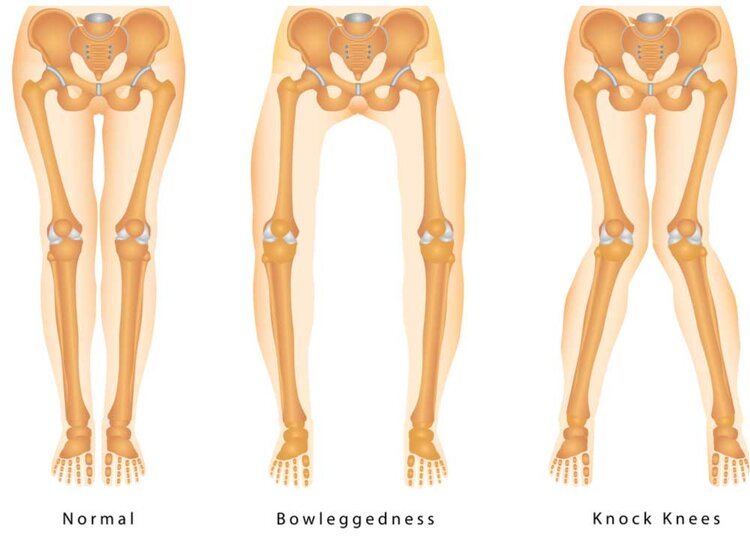DISCUSSING KNEE MALALIGNMENT WITH DR. GIRLING
Knee malalignment occurs when the angle of your knee is not as straight as expected. In a perfectly aligned knee, weight is distributed evenly across the knee joint. This malalignment can happen for many reasons. In some instances, an individual is born with the condition or can develop it due to trauma. It can, also, develop over time as a result of arthritis or a previous surgery.
Knee malalignment is visible and commonly seen on an individual with a bow leg or a knock knee. A knee is going to be closer to the other than it's supposed to be, or further away from the opposite knee than it's supposed to be under these conditions. It's common to have some variance. Everybody's anatomy is different, so no set of individuals will have the exact same angles to their knees.
Knock knee (valgus knee) is a condition in which one or both knees tilt inward toward the opposite knee while the ankles remain spaced apart.
Bowleg (varus deformity), more common than the latter, is a condition in which a person’s legs appear bowed (bent outward) even when the ankles are together.
The causes of the deformities which produce knee malalignment syndrome vary widely. Major categories include deformities that an individual is born with, deformities that one acquires over time, because of either genetics or activities, those related to another disease process, deformities from a previous surgery, or past trauma. Knee replacement specialists will most commonly see these conditions develop from arthritis.
The more common arthritis related condition is a bow leg. However, you can certainly get a knock knee—sometimes an individual can even develop one knock knee and one bow leg. When this condition happens we commonly refer to it as a windswept deformity, meaning that both knees are pointing the same way. It's like the wind is going to blow you over.
WHENEVER WE LOOK AT THE MALALIGNMENT, OUR BIGGEST CONCERN IS WHETHER THE SYNDROME IS AFFECTING YOUR QUALITY OF LIFE. IS THIS AFFECTING YOUR FUNCTION? IS IT CAUSING OTHER PROBLEMS?
An individual with knee malalignment that's not experiencing pain nor whose quality of life is impacted, is not someone we will hurry to treat.
However, if knee malalignment—whether it's at an early age or right in the prime of your life, or whether it's later in life—is affecting your quality of life—since it can affect the hip, back, knee and ankle—we recommend addressing and evaluating the pain.
Treatment options for knee malalignment mainly focus on the kind of surgery it will require to treat the condition and the source of the problem. When we examine the condition of the knee, we take very different approaches in the operating room to correct each respective condition. The more severe the condition, the harder they are to fix—as expected.
With a patient of a younger age, we're going to do everything we can to save the knee, so we would likely perform an osteotomy, which means we're breaking the bone and reshaping it to allow it to heal correctly.
At an advanced age, we would typically perform an arthritis type surgery or replacement type procedure. During those replacements, we straighten the knee out. If your bow legged or have a knock-knee because of arthritis, we can correct that with a surgery.
We perform revision surgery in situations where a patient develops knee malalignment because of a previous surgery or because of wear and tear after a previous surgery.
RECOVERY CAN BE RELATIVELY RAPID, ABOUT TWO TO THREE MONTHS, AFTER MOST CORRECTIVE SURGERIES FOR KNEE MALALIGNMENT.
However, recovery time will depend on the complexity of the situation. Longer recoveries are mainly exclusive to instances where a more extensive, more severe problem is affecting a patient.
Theres a lot of different things that can cause both of those conditions. Before diving into surgery you need to make sure you have a conversation with your surgeon about the details of the procedure, the recovery process and what to expect before, during, and after surgery. For those and many reasons, we always recommend having a comfortable relationship with your surgeon.

